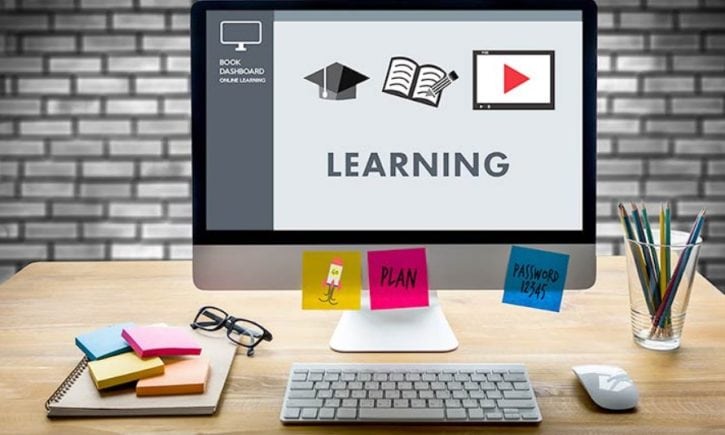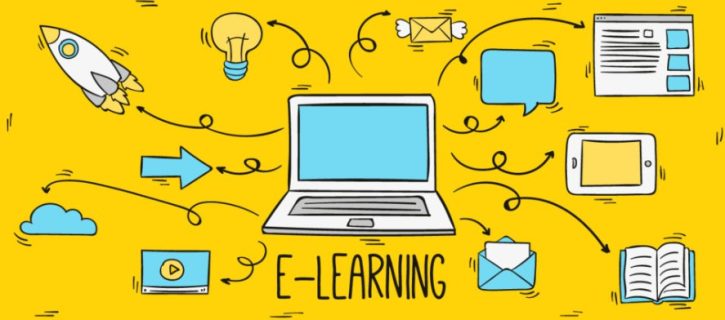In the current digital era, the education sector is undergoing a massive transformation.
Globally, students and educational institutions are abandoning the one-dimensional, chalk-and-board learning methods.
In this article, I have shared 10 benefits of E-learning.
Instead, they have adopted a variety of online technologies to facilitate, simplify, and contextualize the entire learning process, such as e-learning in higher education.
High tuition costs, budget constraints, and course shortages are a few of the reasons why students around the world are seeking alternatives to the traditional educational system to pursue their education.
Due to its growing reputation, electronic learning has become one of the most popular higher education options in recent years.
Online courses are awarded credit, and their certificates are identical to those for on-campus courses.
According to the National Center for Education Statistics, the number of students enrolled in online-only courses or taking at least one online course as part of their official education increases daily.
E-learning is the delivery of educational content and the acquisition of knowledge through the use of digital resources.
Even though the entire learning process is based on formal education concepts, it is delivered online via electronic devices such as computers, tablets, and even smartphones.
Students can now access their online lessons at any time and from any location.
Top 10 Benefits Of E-Learning 2024
To summarise, the following are ten key benefits that online education has over its more conventional counterparts:
1. Resource Scalability: Save Time And Money
By utilizing e-learning, institutions can save considerable time and money. Participation is free of charge for instructors, equipment, and other resources.
Instead, they may use these saved resources to improve the quality of the learning experience as a whole.
Institutions should invest in online learning for the ten reasons listed below.
E-learning, unlike traditional classrooms, does not restrict an instructor’s reach.
As a result, students can study at their own pace and their convenience.
2. Online Education Has The Potential To Eliminate Teacher Shortages
In a 2019 paper, educational economists from the EPI (Economic Policy Institute) stated that the shortage of experienced teachers is “real, significant, expanding, and worse than we anticipated.”
In addition, the LPI (Learning Policy Institute) has repeatedly emphasized the issue of teacher shortage, identifying it as “one of the gravest challenges facing policymakers.”
The solution to the problem of teacher shortages will likely be difficult, but the benefits of E-Learning in mitigating teacher shortages may be undervalued.
Let’s make a comparison in order to clarify.
E-learning courses designed by one or two certified and experienced professors can be delivered to thousands, if not millions, of students, whereas traditional universities have an average of 16,5 students per faculty member.
E-learning has the potential to reduce the need for the 3 million-person teaching workforce that currently exists in the United States.
Instead of focusing our efforts on recruiting more teachers, we should consider allowing our best instructors to use E-Learning to reach a wider range of students.
3. Rapid Distribution Of Lessons
eLearning is a method for rapidly delivering courses. This distribution method provides shorter delivery cycles than traditional classroom education methods.
This means that the amount of time required to learn is reduced by 25% to 60% compared to traditional methods.
The following are some of the reasons why eLearning shortens the duration of the learning process:
- Lessons are brief and can be completed in one session. This enables the implementation of training courses within weeks if not days.
- Students may learn at their own pace, rather than at the same rate as the rest of the class.
- The learner saves time by not having to travel to the training location. You are permitted to study in the privacy of your own home.
- In lieu of studying the entire learning content, students may focus on particular and essential portions of it. They may, for instance, skip sections that they do not wish to study.
4. Individualization: Customized Course Structure
Employees working in environments devoid of photos, plants, souvenirs, and other “distractions” were 15 percent less productive than those who worked in environments with these “distractions.”
This is also true in the educational setting: students whose learning environment is unfavorable will experience detrimental effects on their academic performance and mental health.
A conventional classroom is predetermined by educators according to their preferences.
The learning environment is rarely designed with the student in mind.
When utilizing E-Learning, however, students are in complete control of their learning environment.
Students who desire a plant-filled environment can have their e-learning environments tailored to their preferences.
Students who prefer a simple, distraction-free learning environment may find this E-Learning environment beneficial.
5. E-learning Fully Utilizes Analytics
Data is essential for enhancing training materials and enhancing learning outcomes.
E-learning systems are more effective than any other method of data collection and analysis.
By collecting data on student dropout rates, educational institutions can now identify course material flaws.
They may conduct additional research to determine whether the implemented enhancements improved the situation.
The significance of educational data is enormous, but it has not yet reached its full potential.
6. There Is No Requirement For Textbooks
According to Applied Education System, the textbook market is worth between $7 and $10 billion, and the average college student spends over $1,200 annually on textbooks alone.
Numerous students use their student loans to purchase textbooks, and it is well known that students who graduate with student debts are more anxious and depressed.
E-learning is advantageous because it eliminates the need for students to purchase textbooks.
All of the learning resources are accessible online without restriction.
In contrast to textbooks, which must be reprinted and repurchased when they become obsolete, online learning resources can be repeated and updated indefinitely.
7. Effectivity
E-learning has a positive effect on a company’s profitability. It facilitates comprehension and processing of the information:
- It results in improved certification, exams, and other assessment scores.
- A greater proportion of students achieve a “pass” or “mastery” grade.
- The capacity to acquire and implement new methods or data on the job has increased.
- Contribute to the longer-term retention of knowledge.
8. E-learning Adapts To Your Particular Requirements
Online education is designed to meet the needs of all students.
Newspapers, books, and all other forms of media have moved into the digital realm as a result of technological advancement.
The same can be said about education, as housewives and individuals with full-time jobs can take online courses while pursuing higher education.
They are free to select their productive hours, which typically occur on weekends when they have extra time.
Given the majority of the world’s population’s hectic daily schedules and lives, multitasking appears to be the future.
9. Environmentally Responsible
Because eLearning is a paperless method of instruction, it contributes significantly to environmental protection.
According to research on eLearning courses, distance-based curricula consume 90 percent less electricity and generate 85 percent fewer CO2 emissions than traditional campus-based educational courses.
Using eLearning, there is no need to cut down trees to obtain paper. Consequently, eLearning is an extremely eco-friendly method of education.
10. Easy Tracking Of Learning Progress And Measurable Outcomes
E-learning is exceptional for tracking results, evaluating outcomes, and receiving feedback.
While it is impossible to keep a close eye on every student pursuing an education in the traditional system, e-learning approaches permit a constant and consistent evaluation of progress.
As a result, each student’s needs are met, and the overall quality of education is enhanced.
FAQs
How does e-learning offer a wide range of courses?
Online learning platforms provide many courses on various subjects. You can learn anything from computer programming to art history without being limited to local options.
Is e-learning effective for different learning styles?
Yes, e-learning offers diverse materials like videos, quizzes, and interactive modules that cater to various learning styles, helping you understand better.
How does e-learning improve technology skills?
E-learning requires using computers, the internet, and sometimes specific software, which helps you develop essential tech skills for the modern world.
How does e-learning provide up-to-date content?
Online courses can be updated quickly to include the latest information and trends, ensuring you learn current and relevant content.
Does e-learning offer personalized learning experiences?
Yes, e-learning platforms often use algorithms to suggest courses and materials based on your progress and interests, making your learning experience more personalized.
How can e-learning be more engaging?
E-learning often includes interactive elements like quizzes, discussions, and multimedia, making learning more engaging and enjoyable compared to traditional methods.
Quick Links:
Conclusion: Benefits Of E-Learning
E-learning is transforming education by offering flexibility, cost savings, and accessibility.
Students and institutions are moving away from traditional classroom methods to embrace online learning.
This shift is driven by high tuition costs, budget constraints, and course shortages, making e-learning a popular choice for higher education.
Online courses offer the same credits and certificates as on-campus ones, and their popularity is increasing daily.
E-learning provides numerous benefits, including scalability of resources, addressing teacher shortages, rapid lesson distribution, customized learning environments, effective use of analytics, eliminating the need for textbooks, improving learning effectiveness, adapting to individual needs, being environmentally friendly, and easy tracking of progress.
These advantages make e-learning a preferred alternative to traditional education methods.



